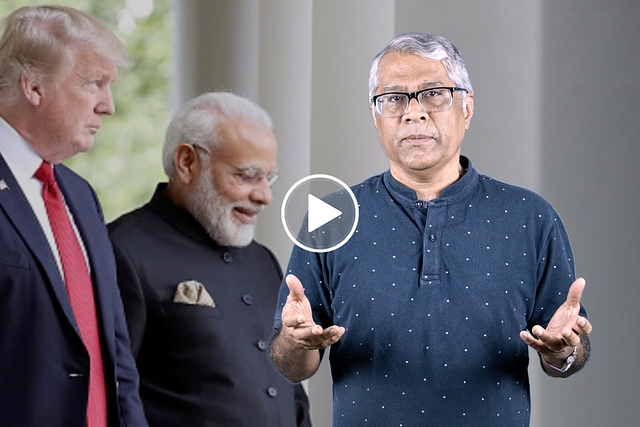
[Watch] Good Riddance, GSP: Why India Should Welcome Losing US Preferential Trade Treatment
The United States has notified India that in 60 days it will remove it from the Generalized System of Preferences, under which more than 2,000 Indian items go to the US as exports with very low tariffs.
The GSP, or the Generalized System of Preferences, was started sometime in the 1970s in order to give poor countries like India a chance to export to the US.
Under this category, about 5000-and-odd Indian products are eligible for low-duty entry into the US, ranging from 1-6 per cent, and they can actually export more with these tariffs.
But the US, under Donald Trump, now says that this won't happen from May, which is about 60 days.
It's quite possible that India and the US may work out a compromise in the next 60 days, but even assuming that no compromise is worked out, it may not actually be that earth-shattering as far as India is concerned.
The official figure is that about $5.6 billion of trade will be impacted. But out of this, the duty benefit is very low -- less than $200 million, i.e., about Rs 1,300 crore.
And out of this Rs 1,300 crore, the products that have very high or 4+ per cent duties are actually only about 2,000, which means about 40 per cent of the total.
What it means is that even if GSP goes in May, less than about 40 per cent of the products now converted under GSP will be impacted by the shift.
So, is that a good thing or a bad thing?
I think obviously at the margins many people will be affected, but India should take this as a positive move -- a push towards improving its overall competitiveness.
We can't forever remain on crutches.
A duty relief in the 1-6 per cent range is not earth-shattering. It's not going to change dramatically India's export performance.
So, I think we should accept it and start changing it, so that overall we focus on export competitiveness and not on specific sops and crutches like GSP.
The GSP is not a long-term solution even for India. At some point it has to go. Because India has moved from being a very poor and uncompetitive country to something a little more competitive.
And also, a law like the goods and services tax is actually improving our ability to compete. At some point, GST will weed out the very weak small and medium sector players who benefited from GSP to actually scale up and become more competitive and less volume-driven.
So, I think, in the long term, the exit of GSP from Indo-US trade will force us to formalise our enterprises, make our small and medium enterprises more competitive, and it is a good thing.
Also Read: Trump May Have Done Us A Favour By Forcibly Removing The GSP Crutch
Subscribe to Swarajya on YouTube.